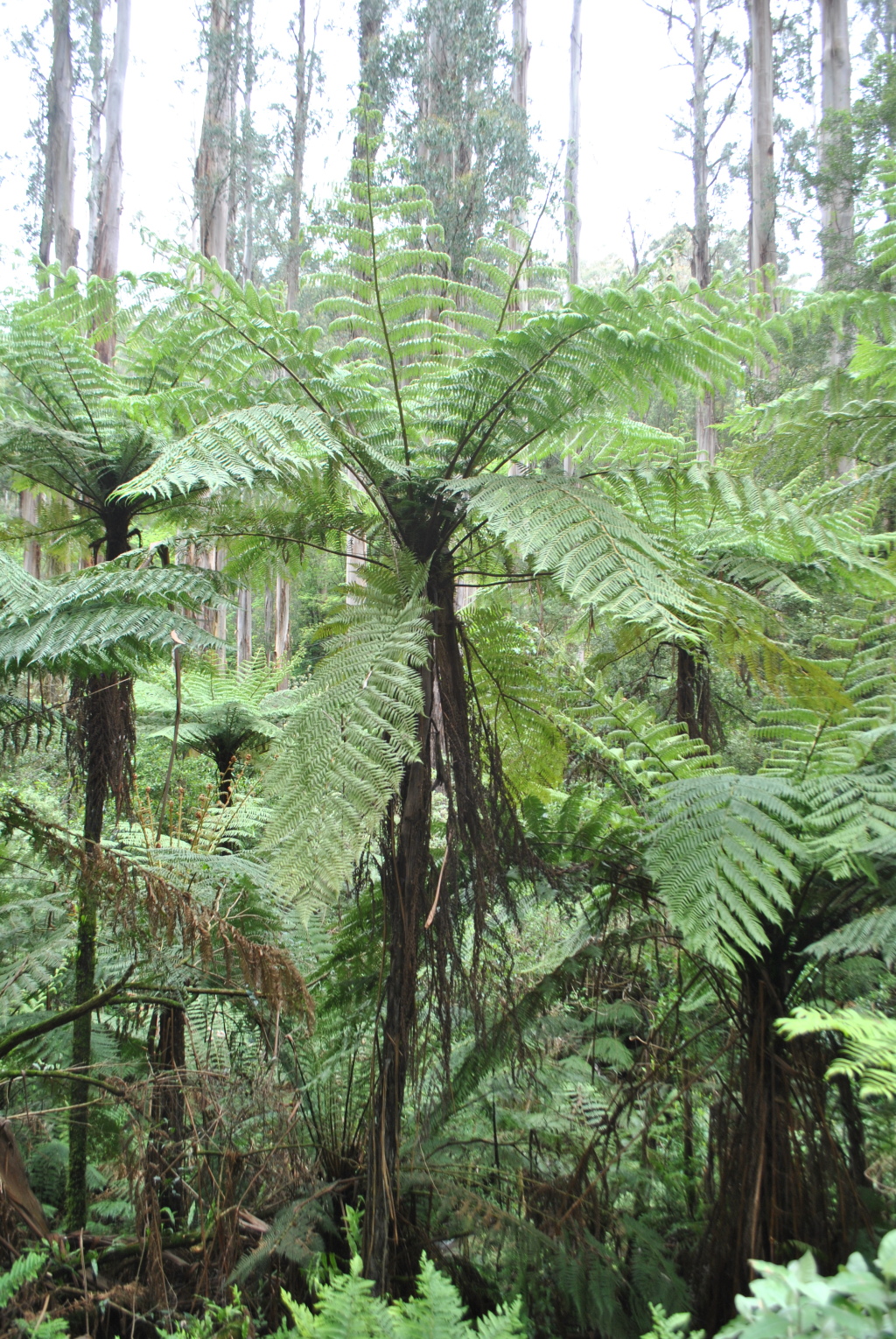Cyathea cunninghamii
Hook.f. Slender Tree-fernTrunk erect, slender, to 20 m tall, 8–10 cm diam. Fronds 1.5–3 m long. Stipe short, coarse, black, dull, with numerous, very small, sharp tubercles; persistent stipe bases crumbly; scales (at base) ovate to linear, 1–4 cm long, papery, shiny, pale fawn to light brown, often with dark central streaks, with hair-points and a dark seta at tip. Lamina subtriangular to sublanceolate, 3-pinnate with pinnae shorter near stipe, dark green; primary and secondary pinnae narrowly oblong with secondary pinnae abruptly decreasing in width to linear tips; lower surface of rachises with scattered scales which are usually membranous and flat, each with a terminal seta; ultimate rachises mealy-brown underneath due to numerous stellate scales and hairs; upper surface of rachises and veins with numerous, curled, pale and red-brown hairs. Pinnules sessile with adjacent broad bases continuous, margins shallowly toothed on sterile pinnae and deeply lobed when fertile; lower surface of veins with tiny, colourless, stellate hairs. Sori only one per lobe, with narrowly ovoid, dark grey, furry receptacle; indusium prominent, deeply but incompletely cup-shaped (with notch towards margin), membranous, dark at centre, often splitting in two when dry and appearing as 2 half-cups.
GipP, OtP, WaP, EGL, EGU, WPro, HSF, OtR, Strz, HFE. Also Qld, NSW, Tas. (including King Is.). New Zealand. Of limited distribution in Victoria and confined to deep gullies in wet forests (e.g. Otway Range, Dandenong Ranges, Tarra-Bulga National Park, Wilsons Promontory, Mt Drummer in the far east) and seldom common.
The combination of dark green fronds, an abrupt decrease in pinnae width to linear tips, and the cup-like enclosing indusium, clearly distinguish C. cunninghamii from the other 4 Cyathea in Victoria. The stellate hairs on the lower surface of ultimate rachises and veins, although too minute to be seen even with a hand lens, are also characteristic of this species. It has been reported that C. cunninghamii does not become fertile before plants attain a height of about 7 m, corresponding to an estimated age of about 20–25 years!
Entwisle, T.J. (1994). Ferns and allied plants (Psilophyta, Lycopodiophyta, Polypodiophyta). In: Walsh, N.G.; Entwisle, T.J., Flora of Victoria Vol. 2, Ferns and Allied Plants, Conifers and Monocotyledons, pp. 13–111. Inkata Press, Melbourne.
 Spinning
Spinning


